In a constantly evolving telecoms sector, where innovation and customer engagement are paramount, operators must explore new telecom marketing strategies to improve their services and win market share.
One of the marketing strategies that is gaining the most ground in this vertical is gamification. By incorporating elements traditionally associated with games, this approach offers competitive advantages. They stand out from the crowd, capture and engage their audience. And devise loyalty levers that will reduce their churn rate (i.e. the percentage of customers lost over a given period).
In this article, we’ll look at how gamification is helping to meet the marketing challenges currently facing the sector. We will look at 4 examples of gamified campaigns that have enabled operators to achieve their objectives (prospecting, brand awareness, engagement, etc.).
The challenges of telecom marketing
The telecommunications sector is facing a number of marketing challenges, linked in particular to ever-increasing competition, rapid technological and regulatory change, and new consumer expectations.
Stand out from the crowd in an intensely competitive environment and price war
With the arrival of players known as MVNOs (or mobile virtual network operators), traditional operators are having to revamp their offerings to make them attractive : commitment-free, customisable, flexible and offering better value for money.
Building loyalty among customers who are increasingly volatile and whose expectations have changed
The churn rate is high in the telecoms sector. Customers move from one operator to another, taking advantage of number portability to take advantage of the best offers. Organisations have to meet expectations in terms of speed of service, personalised experiences, connectivity and customer service.
Communicate its values and reassure consumers about the impact of its services
Although the roll-out of 5G is a major marketing argument, it raises a number of concerns (linked to cost, coverage and environmental impact). Operators need to communicate the sustainability of their offering and show that they are making the transition to equipment and services that are less harmful to the planet.
Migrating to a more digital offering
The benefits of gamification for telecom marketing
- Better brand differentiation. Gamification enables telecommunications companies to differentiate themselves in a saturated market. Competitions improve brand awareness and their viral potential attracts a wider audience. It’s a way to position yourself as an innovative, customer-focused brand.
- Increased customer engagement. Gamified mechanisms can make even the most mundane tasks (such as paying bills or optimising data management) more enjoyable. Operators can guide users through the customer journey in a fun way. By offering rewards for completing these tasks (such as loyalty points), they are able to motivate and engage them.
- Improved loyalty. Gamification fosters a sense of achievement among customers, encouraging them to stay with the same operator. Multi-level loyalty programmes keep consumers interested by giving them the chance to win gifts as a reward for their loyalty, via a competition reserved for customers, for example.
- Better customer knowledge and simplified personalisation. Competitions are ways of collecting customer data, so you can better understand the expectations of your audience. On the basis of this data, the operator can then propose targeted offers to its customers and prospects, increasing its conversion rate.
4 gamified campaigns for 4 marketing objectives in the telecoms sector
1. Boost brand awareness and generate leads
By taking part in a Memory game personalised for the occasion, players had the chance to win a free smartphone. To generate as much visibility as possible, the campaign was promoted using Adictiz Ads (supported by social ads and email marketing).
The result: over 15,000 registrations and almost 20,000 games played.
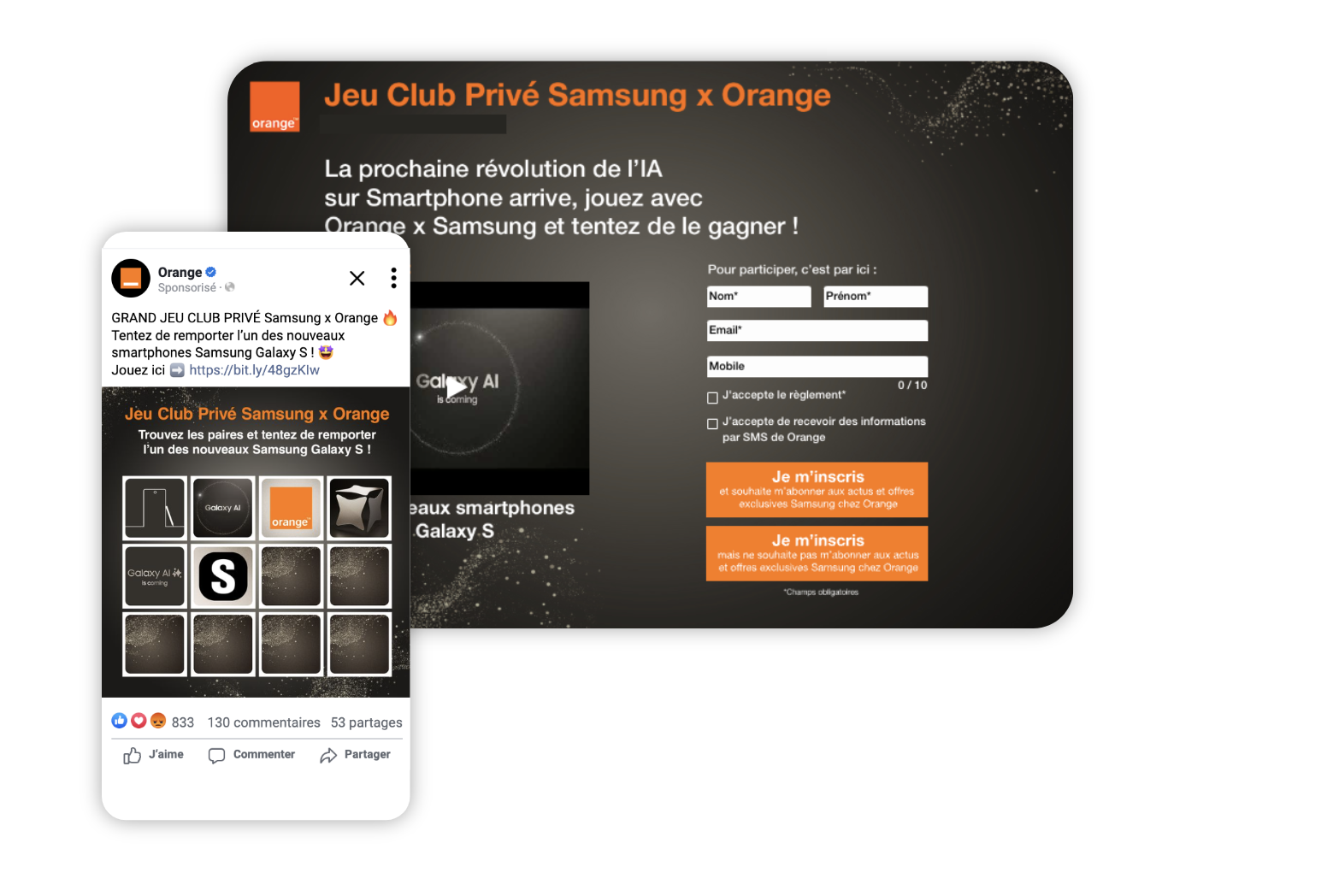
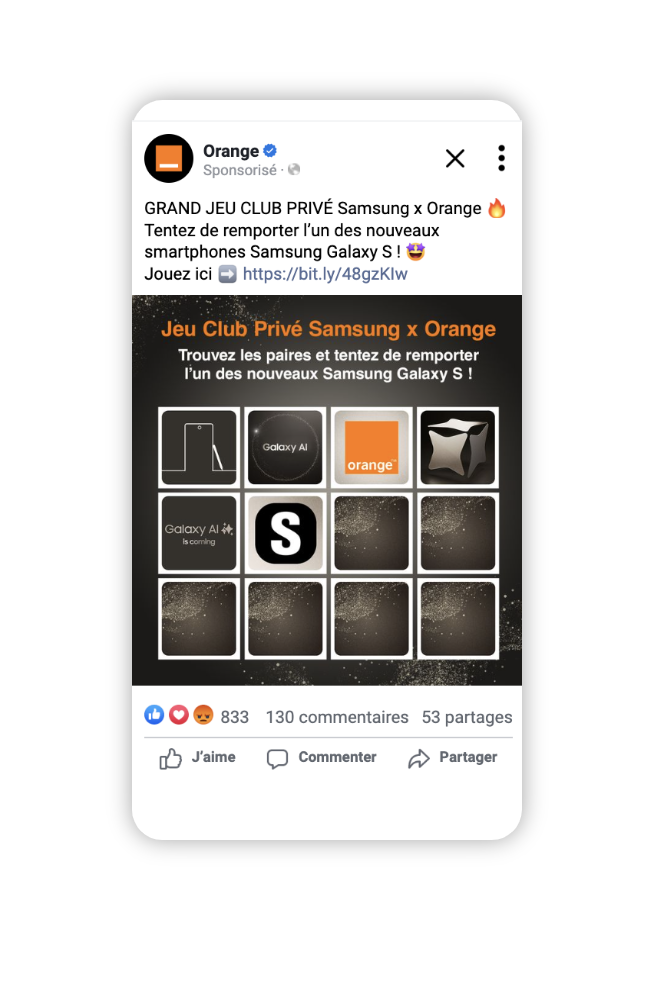
2. Redirect prospects to your digital catalogue
Via a Slicer (broadcast during the Christmas period in the form of a playable ad), the company invited users to cut up fruit while avoiding the catalogue if they didn’t want to get a malus. This 2.1 million impressions for interactive advertising and a click-through rate of 1% (compared with 0.46% for the traditional display format).
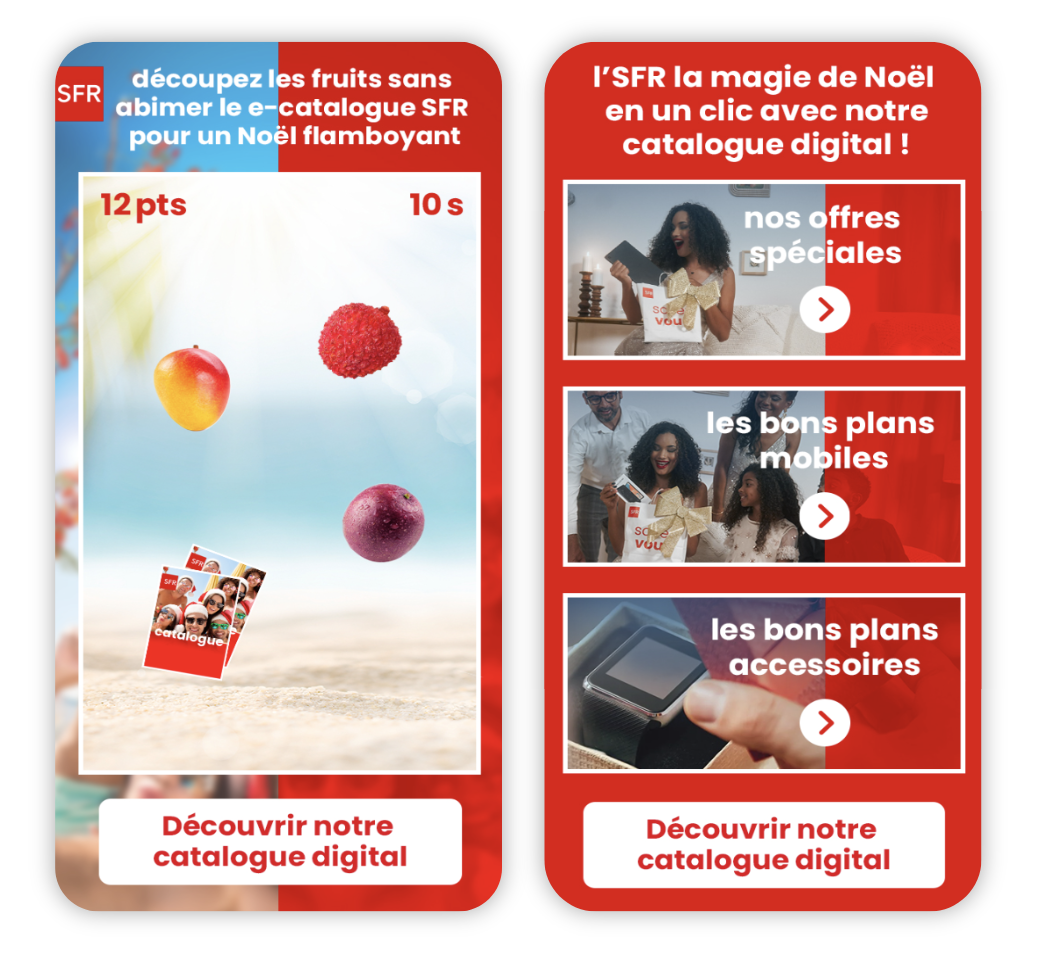
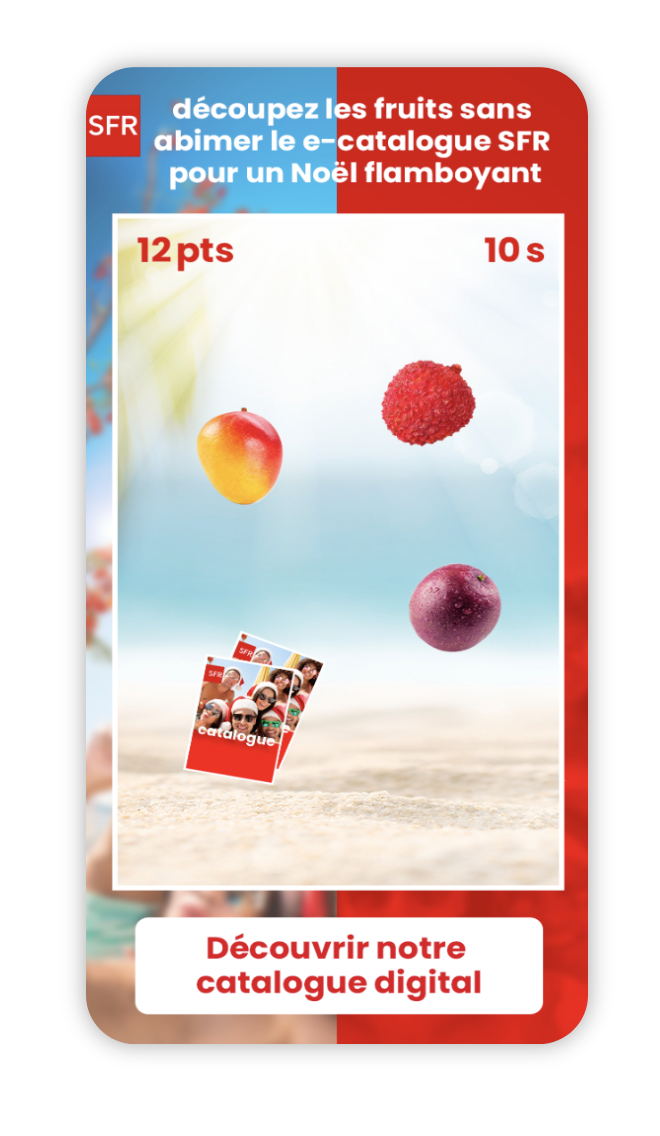
3. Promote these new offers
The elements scrolled through the One-Armed Bandit, aligning themselves with each click.
Result: 2 million impressions and 18 seconds of interaction with participants (compared with 3s for traditional display).
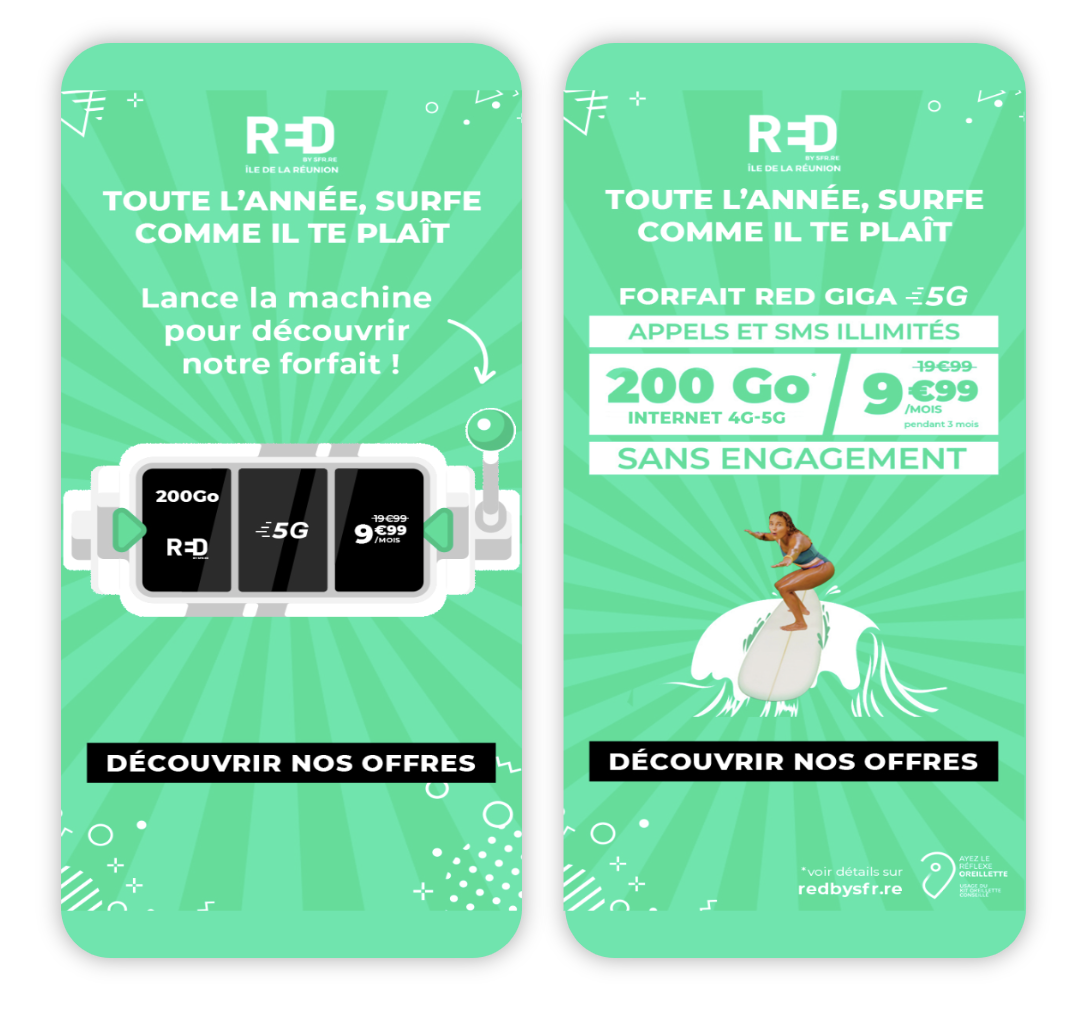

4. Engaging your customer community at a special event
Result: The interactive campaign (a Match 3 supported by Adictiz Ads media coverage) was a success, with remarkable levels of engagement. Each participant spent an average of 11 minutes on the game.
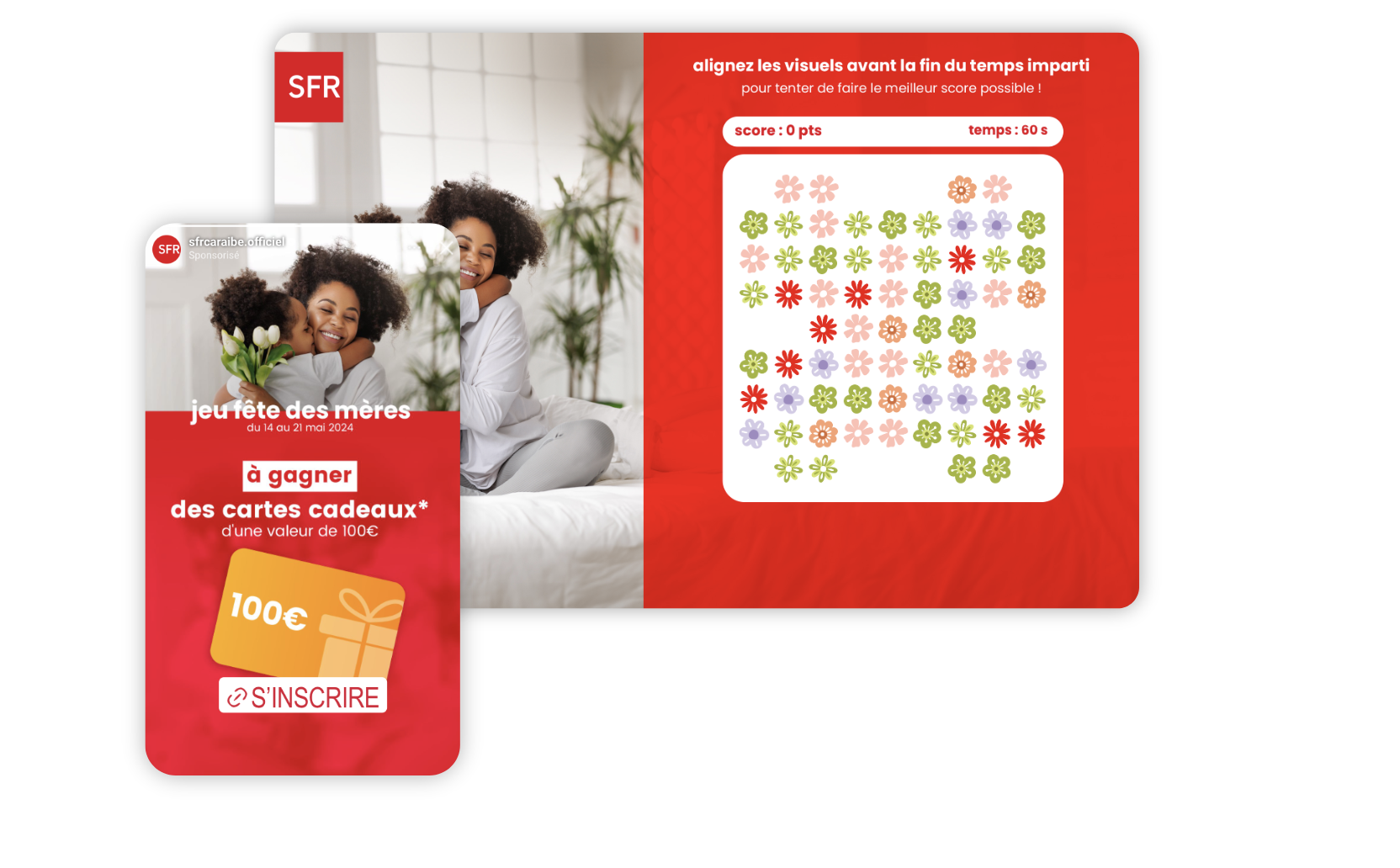

Conclusion






